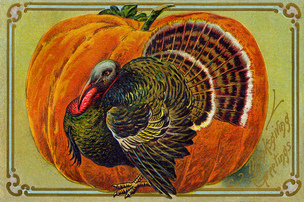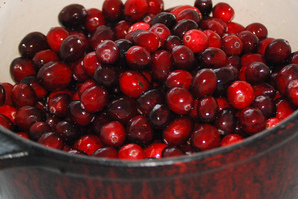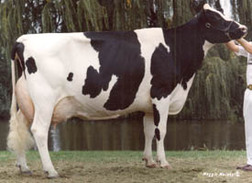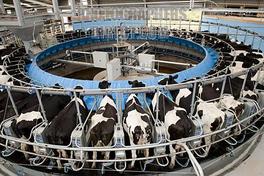Biotechnology is a modern issue in the agriculture industry. For those of you who may not know, biotechnology is the genetic engineering of living organisms or their components to produce useful, usually commercial products. An example of modern biotechnology is genetic engineering.
Genetic engineering is the process of transferring individual genes between organisms or modifying the genes in an organism to remove or add a desired trait or characteristic. Genetically Modified (GM) crops or Genetically Modified Organisms (GMOs) such as BT corn are formed during genetic engineering. Biotechnology can assist farmers in improving yield and profit by reducing the use of costly inputs, improving weed management, reducing tillage for better soil, and improving water and air quality.
Modern biotechnology can be beneficial in many ways. Farmers use agricultural biotechnology to increase crop yields, prevent damage from pests, and reduce farming’s impact on the environment. Biotechnology is also used to diminish our footprint on the environment, feed the hungry, provide breakthroughs to combat disease, and make convenient products. Biotechnology can unquestionably be a prodigious factor for our world.
Everyday researchers explore new benefits of biotechnology. Healthcare researchers are using biotechnology to discover a cure for cancer. Scientists are in the process of developing salt-tolerant and drought resistant crops.
Our global population is estimated to reach 9.4 billion by the year 2050, which means global food production must increase 70 percent by that year in order to meet our needs. With agricultural biotechnology we may possibly meet those needs. Biotechnology has a great outlook for the future and advancements in biotechnology could improve our world.
**To find out more about biotechnology please visit fb.org
There are many myths about agriculture, today we are going to talk about a myth that is commonly heard about factory farming. The myth states “Farm animals are routinely raised on factory farms, confined in crowded, unventilated cages and sheds.” This is a myth. The truth is that the animals in factory farms are kept in barns and similar housing, to protect their health and welfare. Being housed protects these animals from diseases, bad weather, extreme climates, and predators. Housing makes it easier for farmers to care for both healthy and sick animals. It also makes breeding and birth less stressful, and protects young animals. Today’s housing is designed to fit the animals’ specific needs, for example fresh water and a nutritional balanced diet. Housing is designed to allow farmers to provide the best care for their animals. So, next time you see a video talking badly and spreading myths about factory farming, do a little research before you come to a conclusion on what is and is not true.
A Message to the Reader:
Sorry for the short post this week! I have been on vacation and not had much time to research. Next week everything should be back to normal and a full article will be posted. Thanks for reading "The AG Princess" blog!
Follow me on Twitter. Like my Facebook Page. Subscribe to the Newsletter!
The dairy industry is a very important industry in agriculture. Nearly every morning, I wake up and enjoy a glass of milk, as do many other people around the world. Without the nutrients that we get from dairy products our teeth and bones would be very weak. As a member of the 2010 Alabama State winning Dairy Judging team, I learned a lot about the importance of the dairy industry. I also learned exactly how our milk gets from the cow to the kitchen table. Below you can find the process that it takes to get milk to your kitchen table, and a few facts about the dairy industry.
The Process: How does the milk get from cow to the kitchen table?
First, the cows are rounded up to the dairy or milking parlor for milking. There, the cows are led in to be milked. Suction cups are then put on the cows udders to suction out the milk. After milking the cows, the suction cups are removed and the cows’ teats are sprayed with a disinfectant to prevent infection. After all the cows have been milked, the milking parlor/dairy is then washed out and cleaned. The milk is stored in the refrigerated vats until the milk truck arrives to collect it. When the milk truck arrives to pick up the milk it is taken to the factory for processing. While at the factory milk is tested, pasteurized to kill bacteria, and homogenized to prevent the cream from separating and settling on top. After this, the milk is sent through a processing line and bottled. The milk is then sent to supermarkets and other shops. Then, of course, we buy the milk! That is how the milk gets from the dairy farm to our kitchen table!
Udderly Amazing Facts!
In a year’s time a dairy cow produces 1,500 gallons or 6,000 quarts of milk. A Jersey cow will give as much as 3 to 4 gallons or around 16 quarts of milk each day.
Dairy cows provide us with milk and milk by-products like cheese, butter, and ice cream. In addition, milk is also used to manufacture glue, paint, and plastics.
Straight from the cow, the temperature of cow’s milk is about 97 degrees Fahrenheit.
One cow can give 200,000 glasses of milk in a lifetime!
It takes approximately 1.4 gallons of milk to make 1 gallon of ice cream.
Cheese was made over 4,000 years ago in Asia.
A cow has one stomach with four compartments. They are: the rumen, where the food is first stored, the reticulum, where food that has been more thoroughly chewed is stored once the cow has chewed the cud and has swallowed it; the omasum, where extra water is squeezed out, and finally the food goes to the abomasum. Some of the digested food is then stored in the cows udder where it is made into milk.
A typical, full grown Holstein cow weighs about 1,400 pounds and produces 60 pounds of milk per day.
One day’s production is 2.6 pounds of butter, 7 gallons of milk, or 6 pounds of cheese.
A dairy cow consumes 35 gallons of water, 20 pounds of grain and concentrated feed and 35 pounds of hay or silage in just one day!
It usually takes about 20 minutes for a cow to be milked. On average a cow is milked 2 to 3 times a day.
Hamburger meat from a single steer will make about 720 quarter pound hamburger patties. That is enough for a family of 4 to enjoy hamburgers each day for nearly 6 months.




